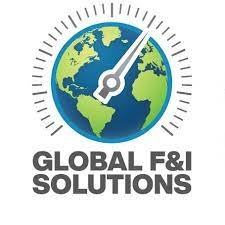
Understanding the Supply Chain Landscape in 2025
The automotive supply chain in 2025 faced unprecedented challenges that reshaped its trajectory. Significant events, from tariff implementations to geopolitical instability, created a turbulent environment for automotive retailers. Dealership Principals and GMs had to grapple with these issues head-on, crafting strategies to navigate a disrupted market. One pressing concern was the new administration's 25% tariffs on goods imported from Canada and Mexico, which forced companies like General Motors and Stellantis to reassess their operational models due to its profound impact on cross-border goods. These tariffs not only inflated costs but also triggered a competitive dilemma in used vehicle sales, as retailers sought to shift focus to affordable options amid rising prices.
Lessons Learned: How to Handle Future Disruptions
The key takeaway from 2025 is the importance of flexibility in supply chain management. Auto retailers must develop dynamic strategies that allow them to adapt swiftly to changing regulations. This year’s semiconductor shortage, a lingering issue, highlights the vulnerability of traditional manufacturing processes. Adaptation may require exploring alternative suppliers or investing in local production capabilities to reduce dependency on high-risk global supply chains. Implementing predictive analytics tools can help anticipate shortages and improve inventory management, thereby mitigating risk.
Evaluating Labor Compliance Risks
Labor compliance emerged as a significant challenge this year, particularly in light of increased scrutiny following incidents like the forced labor controversy associated with specific components. For luxury car brands, ensuring ethical sourcing has never been more critical. Dealerships must bolster their compliance frameworks to maintain brand integrity, which could involve revisiting supplier agreements and enhancing oversight on ethical practices. Transparency will be key, as consumers increasingly demand corporate accountability.
Geopolitical Factors and Global Instability
The ongoing wars in Ukraine and the Middle East have wreaked havoc on global fuel prices, creating additional uncertainty for auto retailers in 2025. Fuel price fluctuations directly affect production costs, logistic deliveries, and ultimately, vehicle pricing. Leaders in the auto retail space must proactively engage in risk assessment and scenario planning that incorporates potential geopolitical developments. Enhancing partnerships with local suppliers can serve as a risk mitigation strategy, ensuring access to necessary components even during fluctuations.
What’s Next for Automotive Retail?
Looking ahead, the automotive industry must prepare for continued disruptions by investing in technology and innovation. The development of digital platforms for used car financing, for instance, can help streamline customer access to competitive used car financing rates. Innovative solutions, such as used car loan calculators or financing options with lower interest rates, should play a focal role in dealer marketing strategies, attracting consumers focused on affordability.
Conclusion: A Call to Move Forward
By embracing these lessons from 2025, auto retailers can build resilience against future disruptions. It’s essential for dealership principals and GMs to foster a culture of innovation that not only strengthens operations but also addresses the evolving needs of customers seeking used cars with financing. Now is the time to enhance strategic planning efforts to not just survive but thrive in an unpredictable landscape. As we look to the future, the focus must remain clear: adaptability is key.
 Add Row
Add Row  Add
Add 




Write A Comment